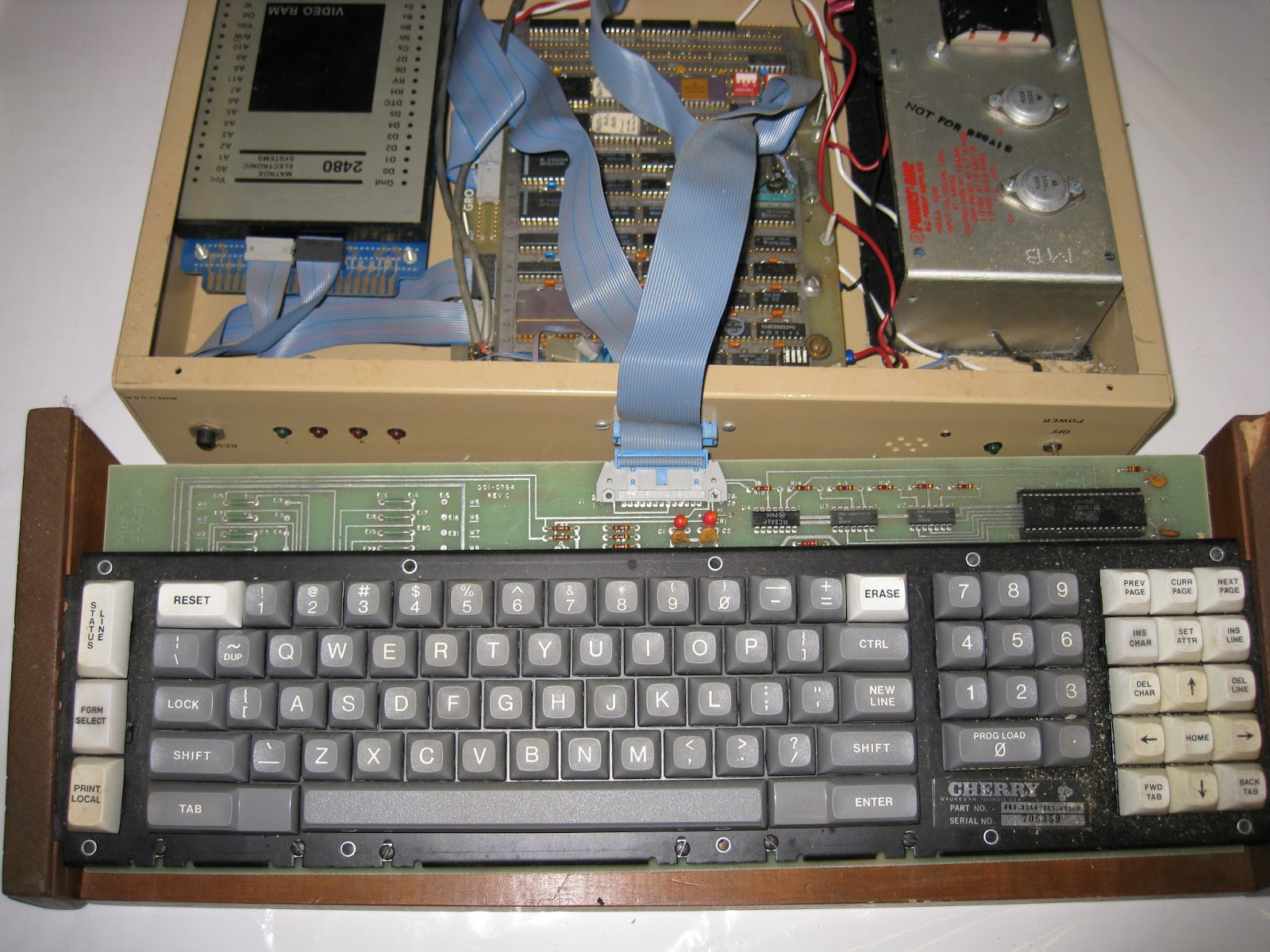Caltech had many things the schools of the northwest did not - while Whitman had an HP3000 minicomputer, Tech offered VAX and other computers including the new Compaq lugable "PCs" running MS-DOS. With a bit of ingenuity, one could copy over microcontroller cross-compilers and compile them on the Compaq, freeing you to programming outside the lab.
Microprocessors of the day included the 6800 and the Z80, with some fancier folks using the 6809 or even the 8086 on the PCs. The big gun was the Motorola 68000 which later powered the early Macintoshes. Handling 16 bit addressing required double the hardware and more support glue chips.
 |
| A Digitalk speech synthesizer circa 1984 |
Here is the project in the completed metal case (which were still prevalent even though they harken back to tube projects).
 |
| Projects used alot of DIP packages wire wrapped together |
| ROM was UVEPROM, shown with a sticker over the mica window |
 |
| No, the Hayes modem wasn't in vogue yet, costing somewhere north of $500 |

 |
| What a hack on the keypad |
Final project, Fall 1984 was designed as a VT100 terminal emulator using a 68000 microprocessor. A beefy power supply, and video system were additions. I had to delay finishing until after Christmas as I spent hours tracking down a softwre issue that appeared to be a hardware fault. It turned out the assembly code needed an odd alignment directive, then it worked like a champ. I did not implement the full VT100 due to the bug but it was pretty big for the day. I had two interviews with Apple that year, perhaps I could have been on the Mac team if it hadn't been a recession?
 |
| Maybe I should convert this keyboard to USB like the LadyAda/Phil NeXT keyboard decoder? It's a Cherry, top of the line. |
The keyboard is a Cherry that was at the surplus store. I had to figure out the protocol, then wire it up to the unit. I made a stained wooden holder for it - I am still amazed at the craftsmanship one can do and still be taking classes, looking for a job and living with my new bride.
That's the early days. My career did not kick off in hardware engineering like I had wanted. The electronics at home would sit mostly packed away for over twenty five years while I built and programmed PCs as a hobby. But the Maker movement came at a time when I was looking for more, and the rest is here in this blog. Thanks for tuning in.


























